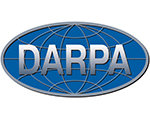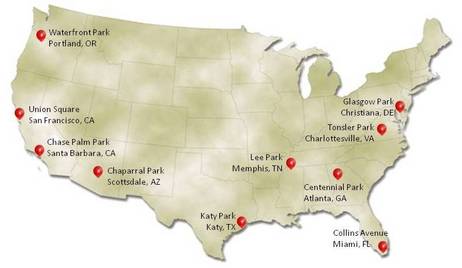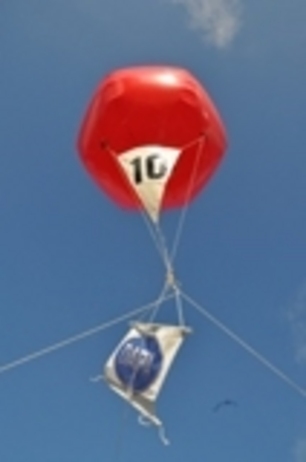Crowdsourcing Goes Up in the World: DARPA Balloon Hunt
Published Nov-14-11Breakthrough:
Crowdsourcing competition to locate the whereabouts of ten weather balloons in undisclosed locations in the United States.
Company:
DARPA, United States
The Story:
 Crowdsourcing showed its true character and worth as a very effective finding tool in the DARPA Network Challenge sponsored by US government agency DARPA (Defense Advanced Research Projects Agency).
Crowdsourcing showed its true character and worth as a very effective finding tool in the DARPA Network Challenge sponsored by US government agency DARPA (Defense Advanced Research Projects Agency).Ostensibly the competition was to celebrate the 40th anniversary of Arpanet, the precursor to the Internet, but DARPA had an ulterior motive. It wanted to test out the effectiveness of a variety of tools and technologies to find missing objects (such as downed aircraft) or people.
In this crowdsourcing challenge participants were asked to find ten red weather balloons that had been secretly placed in locations all over the United States. They were hidden in readily accessible sites and could be seen from nearby roads.
Thousands of contestants took part and they used a variety of search methods and tools including networking tools, satellite and aerial photography, iPhone applications and the Internet.
Rapid Results
In just under nine hours a team from MIT found the latitude and longitude of each balloon and claimed the $40,000 prize. The speed with which they succeeded stunned everyone, including team members who had only heard of the competition a few days previously.
So how did they do it? Well, rather than find each balloon themselves they formed a network to do the work for them, and created a platform for viral collaboration. Taking advantage of the Internet and social media technologies they incentivised people not only to report sightings, but also to recruit additional members to the network. As they explained on their website:
"We're giving $2,000 per balloon to the first person to send us the correct coordinates, but that's not all--we're also giving $1,000 to the person who invited them. Then we're giving $500 whoever invited the inviter, and $250 to whoever invited them, and so on.”
Impressively this recursive recruiting method reached 5,400 individuals in 36 hours.
MIT’s approach yielded more than 200 submissions of sightings of which 30 to 40 were accurate. The team needed to sort out the wheat from the chaff but did not have an automatic process installed to determine correct sightings, nor did it have a network in place to act as verifiers. And so it applied good old fashioned logical human reasoning.
This involved looking at differences in the patterns of submissions. As the balloons were in public places they tended to elicit multiple submissions, which increased the probability of them being accurate. However, multiple malicious submissions were also being sent in.
Multiple submissions about the real weather balloons had small differences between each other reflecting a natural variation in representing certain locations, but the multiple malicious sightings were all identical for a single location.
Then there were other simple strategies such as comparing the IP addresses of a submission with where the balloon was found, and checking photo submissions for contrived images. These fixed photos typically involved shots of the balloons from a distance and did not have the DARPA banner (an unannounced detail).
Insights
The lessons learned from this crowdsourcing initiative can be applied to many areas including business and the public good:
Power in numbers: For some projects pulling together a number of different minds is the best approach rather than relying on one standout individual.
Looking beyond your own group: The team from MIT realised that they stood a better chance of winning the challenge if they ventured outside their own immediate circle.
Quick results: The competition demonstrated how crowdsourcing can deliver rapid and efficient answers.
Incentivize: The team not only gave people a reason to participate but also to recruit others. This even made it possible for individuals who could not find the balloons directly to get involved by suggesting people who would be able to find them.
Of the challenge itself DARPA said that it was a “clear demonstration of the efficacy of crowdsourcing”.
Next Story »



